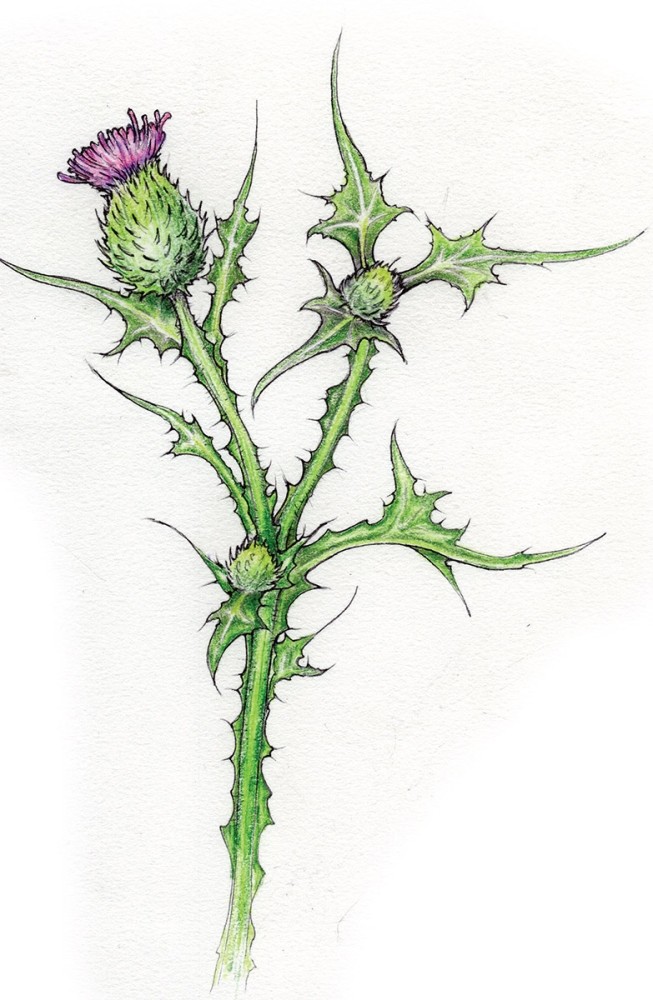There are around a dozen wild plants in the Northeast known as thistles, and while most belong to several related genera, they vary greatly. Some are tall; some are short. Most have purple flowers, but others have white or yellow. Some grow in dry, sunny pastures, others in swamps, and one species even grows near salt marshes. But the thistles that interest me most have three things in common: a tight, cup-like flowerhead; spines; and edible parts to please the hungry forager.
To paraphrase a famous line, with such diversity, it may be hard to define a thistle, but you know it when you step on it. Indeed, that’s how most people meet thistles for the first time, as they wander barefoot in lawn or pasture. While many things called thistle are edible, I’ll write here about members of the genus Cirsium, the most well-known of which is the bull thistle (C. vulgare). As always, proper identification is essential. Cirsium thistles are biennials that appear during their first year as a rosette of long, hairy, spiny, and deeply lobed leaves and then grow a single tall stalk with one to several purple “shaving brush” flowers in their second year.
I look for thistles on roadsides and abandoned ground where they often grow in abundance, and I wear thick leather gloves when I do. The roots can be gathered in earliest spring or late in the fall between the plant’s first and second year when they are full of stored food. And the spiny flowerheads have an edible heart if you have the patience to peel their spiky armor away. (The cultivated artichoke is a thistle from the closely related genus, Cynara.) But my favorite part of the thistle to eat is the long stem. There is a brief window in which to gather these, usually near the beginning of June and well before they flower, after the fast-growing stem has bolted up but before it has toughened. The best way to tell if it’s tender is to grab the top of the stem in a gloved hand and bend it. It should be springy and flexible, not rigid.
Once found, I’ll leave my gloves on to carefully cut the stalks at the base. Then I hold them upside down and use a long, sharp knife to chop away the leaves. What’s left is a spiny little wand about a foot in length from which I scrape the spines and skin away with a knife held at a right angle to the length of the stem. If the leaves are big enough and tender enough, I may cut out the petiole (leaf stalk) and fleshy mid-rib too, which can be peeled in the same way. The tender inside, thus revealed, is delicious raw and even better when cooked lightly. The best thistle stalks are juicy and crisp with a mild flavor. Try them lightly steamed with a dash of salt or with pasta as in the recipe here.
Peasant Pasta
INGREDIENTS
2 ½ tbsps. olive oil
1 onion, chopped
4 cloves garlic, minced
thistle stalk, chopped, enough to equal 3 to 5 large celery stalks
2 cans tomato paste
1 to 2 cans kidney beans, rinsed
Cook pasta, drain, and set aside. Heat oil in a large saucepan. Add onion. Cook until translucent. Add garlic and thistle. Cook 2 minutes. Add tomato paste and 5 tomato paste cans of water. Stir until paste fully dissolves. Salt and pepper to taste. Cook until bubbling. Add beans. Add pasta. Serve with Parmesan.



Discussion *